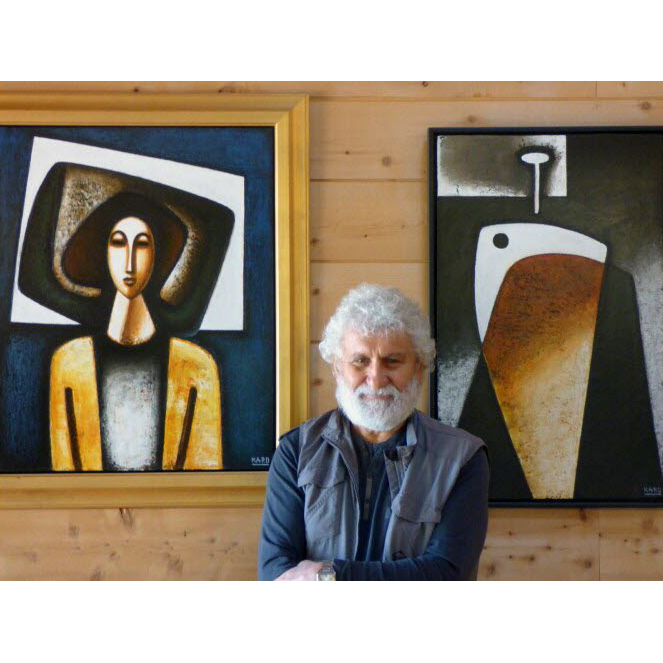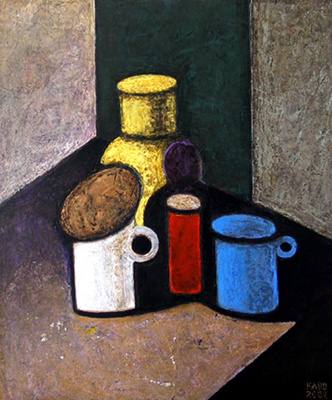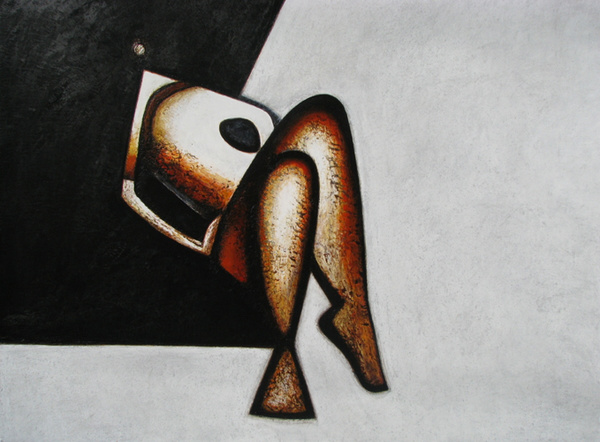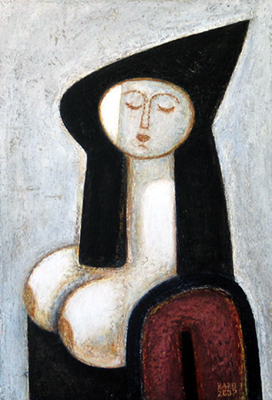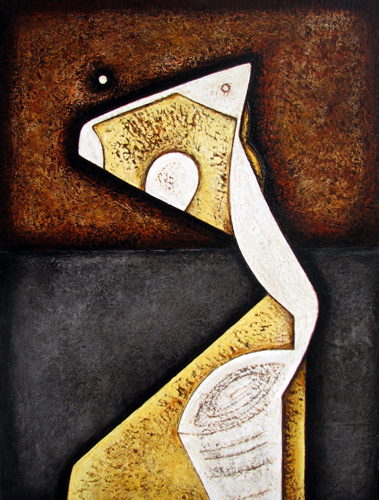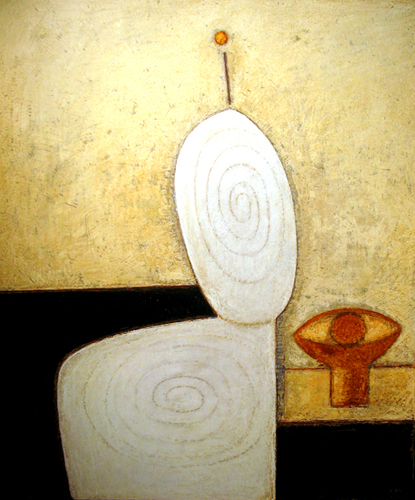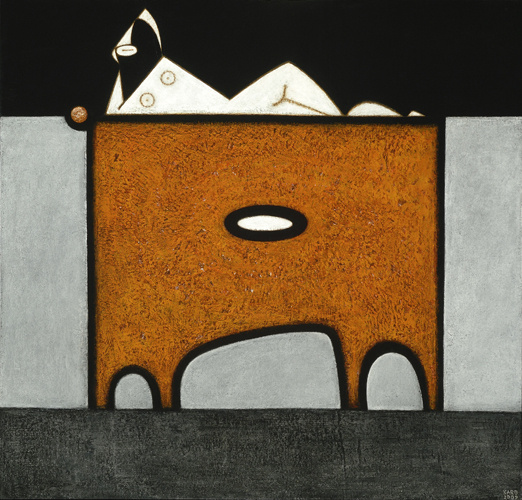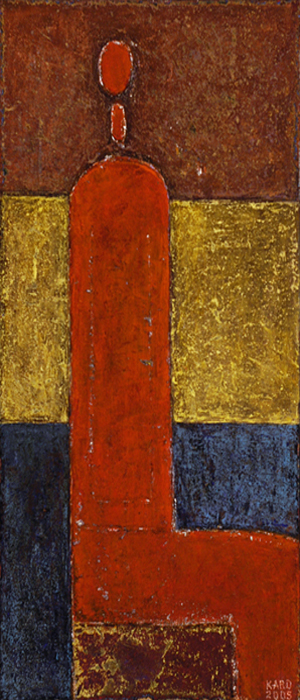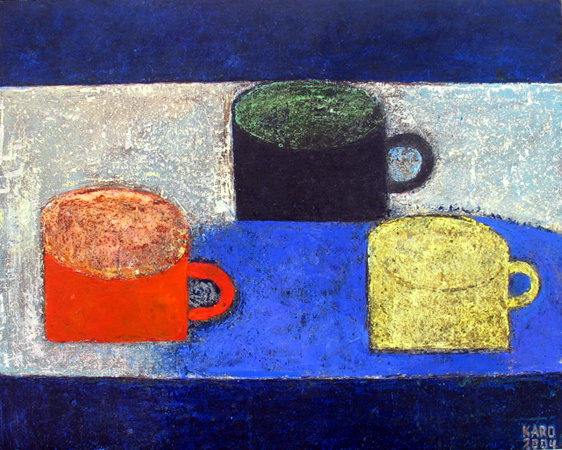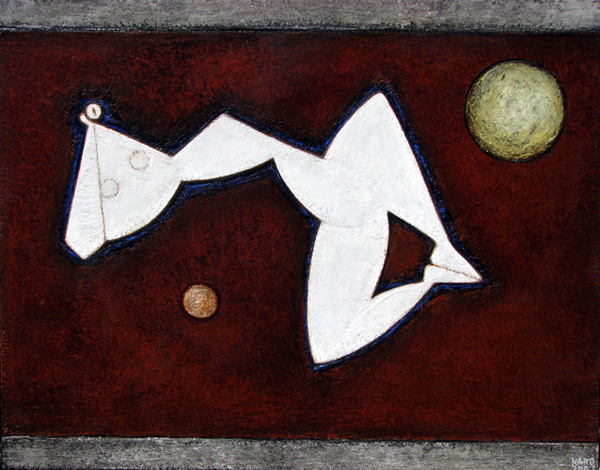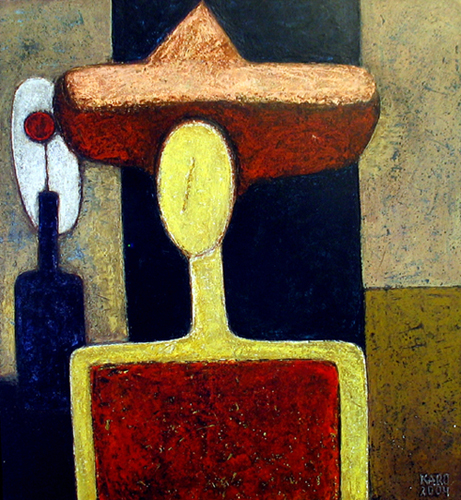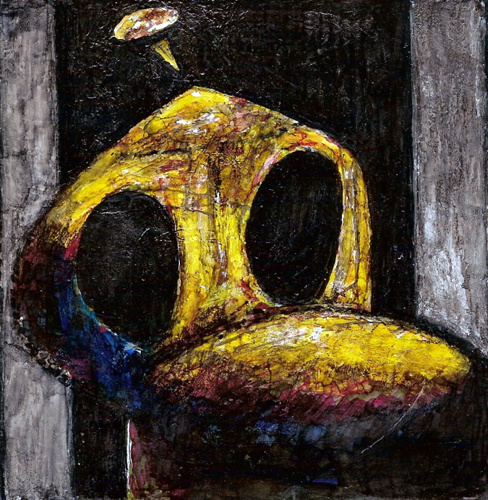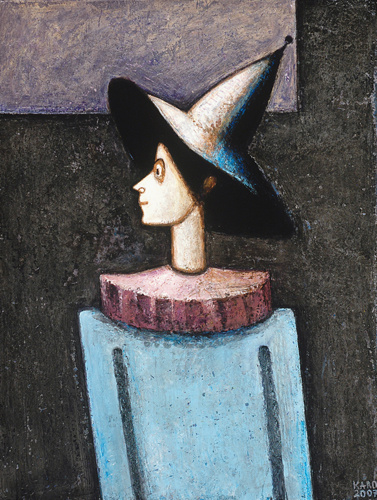Karo Alexanian
Karo Alexanian – Artist Biography
Karo Alexanian was born in Georgia in 1956. He graduated from the Yerevan School of Fine Arts in Armenia and studied painting at the Studio of Painting and Graphic Arts in Moscow, where he was assigned important mural commissions. He has lived in Quebec since 1997 and, a member of the international Union of Artists since 1994, has exhibited his works across Europe, the United States and Canada.
Alexanian is adamant that the emphasis of his art is not on technique. “I am always trying to incorporate a spiritual side to my work,” he says, “something I find strangely absent from a lot of modern art”. The position of the figures in his work suggest a basic emotional state. Facial expressions are not required for the viewer to empathize with the quandary that Karo's subjects are experiencing. In others, the subjects seem almost paralyzed as to what direction to take while the stark, worrisome presence of seemingly innocuous objects in an otherwise bare room provide an anchor for our eye. Other pieces are far more fanciful, reminiscent of the Quebecois surrealist Jean-Philllipe Dallaire with a playful sense of amusement and bold colour design.
Selected Solo Exhibitions:
2020 Thompson Landry Gallery, Toronto, ON
2018 Maison des arts Rostov Russia
2017 Maison des arts Krasnodar Russia
2016 Thompson Landry Gallery, Toronto
2012 Thompson Landry Gallery Toronto
2009 Gevik Gallery, Toronto
2007 Galerie Valentin, Montréal
2007 Gevik Gallery, Toronto
2005 Gevik Gallery, Toronto
2005 C.C.A. Montreal
2004 Galerie Valentin, Montréal
2003 Gevik Gallery, Toronto
2002 Gevik Gallery, Toronto
2000 Galerie Valentin, Montréal
1996 Vienna, Austria
1996 Maison des arts, Moscow
1994 Galerie Eckes,Mainz, Germany
Selected Collections:
Midland Steel Ltd;
Sandalwood Management Inc;
Tietolman Trading Ltd;
Escada Boutique,Boston;
SNC Lavalin;
Ville de Montréal
Artist Specialization: At first glance, the portraits and still lifes of Karo Alexanian seem to be derived from the great ancient Egyptian frescoes. Figures and objects from daily life are reproduced using a strikingly fresh combination of simple lines, colours and texture. Described by the artist as “primitive contemporary,” the work is akin to studied observation – a generalization of form that allows the artist to free up the essential and transform it with gesture. As a result of this process, portraits are reduced to a combination of singular planes – faces become masks and yet still reflect the interior harmony of the subjects.
